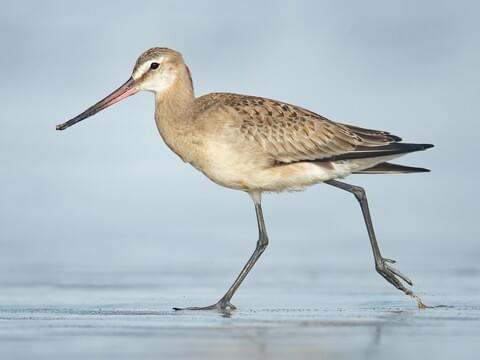
Although historically the biology of this godwit has been poorly known, that is beginning to change. Known breeding areas still account for only a small proportion of the estimated world population, however, and much of the breeding range clearly remains to be described. Those breeding areas that are known are disjunct, and studies by Susan Haig and colleagues suggest that different populations are as distinct genetically as those of any other bird species. This result is especially surprising given that no plumage or structural differences have been described. However, breeding habitat does vary greatly among sites, although it frequently consists of sedge meadows and muskeg at the tree line in Canada and Alaska, often near coastal mudflats or major river systems.

The most detailed study of breeding biology was conducted by J. A. Hagar (2) at Churchill, Manitoba; this remains the benchmark description of the biology of the species. Additional work in that region, by J. R. Jehl, Jr., Joanna Klima, and colleagues, has also been pivotal in furthering our understanding of the species. In Alaska, Williamson and Smith (3) studied the Hudsonian Godwits in the vicinity of Cook Inlet, and a number of biologists elsewhere in the state have continued to find new breeding areas well into the 2000’s. Work begun at both Churchill and Cook Inlet will try to build on these seminal studies and to further our understanding of this species’ breeding biology.
After breeding, the Hudsonian Godwit undertakes a migration from the subarctic to southern South America, in which they make nonstop flights of several thousand miles. During the migration period, this species is found in various fresh-water and saline habitats. Its diet is not well known, but studies by Stuart Alexander and Cheri Gratto-Trevor have shown that migrating birds rely heavily on plant tubers at some inland staging sites (4, 5, 6); at other times, various invertebrates are taken.
Nonbreeding Hudsonian Godwits concentrate at sites with large expanses of coastal mudflats. Increasingly, South American biologists are studying the biology of this species away from the breeding grounds. Detailed research at major nonbreeding sites has been initiated in Argentina and Chile and will be especially important for the future conservation of the species.





